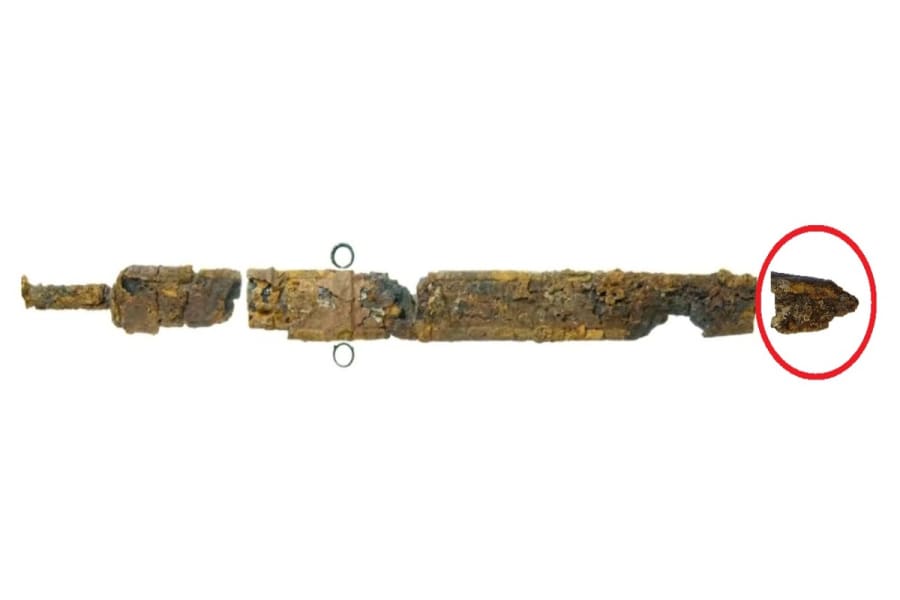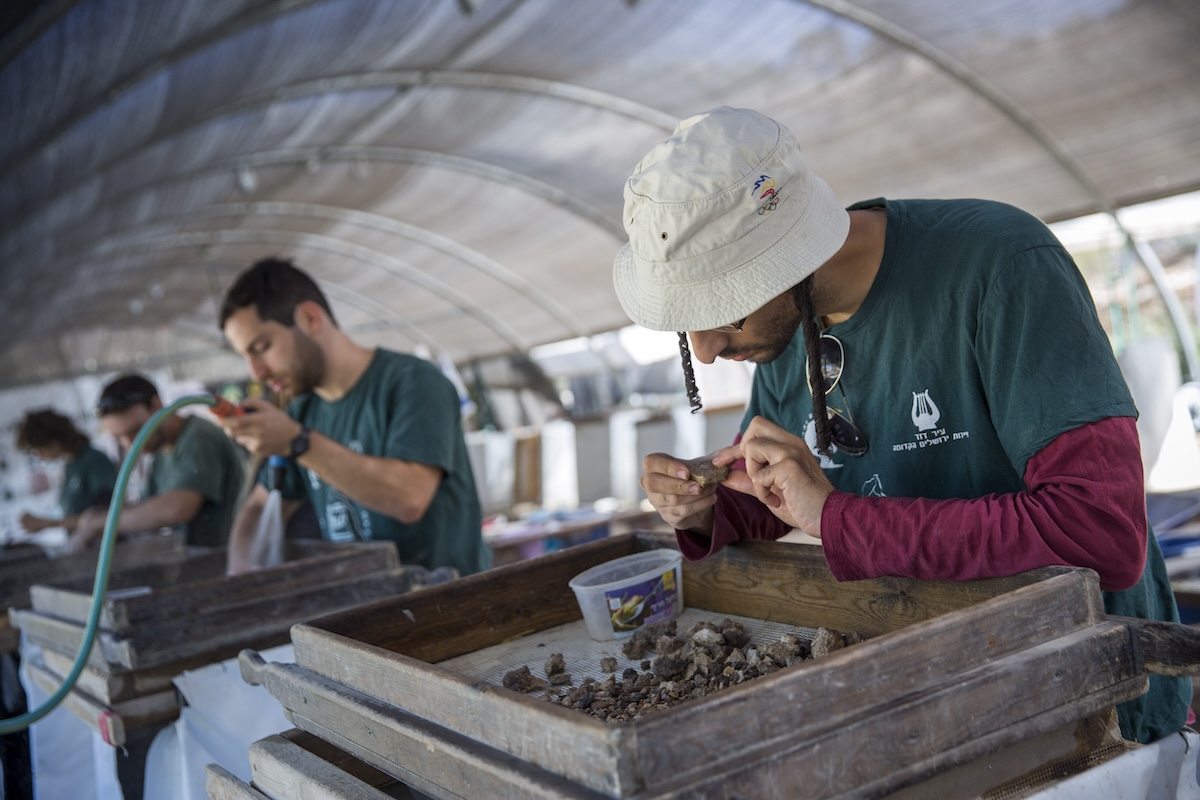Lost tip of 2,000-year-old Roman sword reunites with blade in remarkable City of David discovery
The sword likely belonged to a Roman legionary who participated in the destruction of Jerusalem in 70 AD

Over a decade after a 2,000-year-old Roman blade was unearthed in Jerusalem's City of David (COD), its missing piece – the sword’s tip – was recently discovered.
During a soil-sifting operation at Tzurim Valley National Park, the team came across a small metal fragment that drew their attention.
The team carefully placed it in a secure place, recording the locus number (excavation site) from which the soil was taken. Next to the number, they noted their initial interpretation of the object: "Sword?"
Little did they know that this interpretation was not only correct but would lead to the reunion of two pieces of a single 2,000-year-old lost artifact.

"It was immediately clear that this was likely a piece of a sword, but we didn’t grasp its significance," recalls Ben Mazuz, who was present when the item was discovered.
"It wasn't until the excavation director, Eli Shukron, arrived at the sifting location and saw the fragment that I realized it was something significant. He was very excited and instantly recognized it as part of the same sword he had found over a decade ago. He even identified remnants of the leather scabbard that had covered the blade," Mazuz added.

Shukron, together with the archaeologist Ronny Reich, has led the excavations at the City of David , in Jerusalem for years. When the first part of the swords were found, Shukron was the archaeologist in charge of the excavation of the drainage channel of the Tyropoeon valley at the City of David.
"I always wondered where the tip of this sword might be," Shukron said. "Recently, I visited the sifting site at Tzurim Valley, and the moment they showed me the discovery, I couldn't believe my eyes. I've been waiting over ten years to complete this sword, and today, that day has finally arrived. It's truly a 2,000-year circle coming full."
Shukron also commented, "This isn't an everyday discovery, and it’s particularly thrilling, especially at this time, just before Tisha B’Av."
This Jewish fast commemorates the profound tragedies that befell the Jewish people on this date, including the destruction of the First Temple of King Solomon by the Babylonians in 586 B.C., and the destruction of the Second Temple by the Romans under Emperor Titus in 70 A.D.
The sword, discovered in 2011 during excavations led by the Israel Antiquities Authority (IAA) in the main drainage channel of Jerusalem from the Second Temple era, likely belonged to a Roman legionary who participated in the destruction of Jerusalem in 70 A.D.
The iron blade, preserved at a length of at least 60 cm (almost 2 ft.), amazed researchers because of its exceptional condition.
Although the recent discovery of four remarkably well-preserved Roman swords in the Judean Desert may rival this find, the condition of this sword is truly rare and unique.
Many have interpreted the presence of this weapon as being a Roman sword taken by Judean rebels from the corpse of a slain legionnaire. Some have interpreted the sword's presence as belonging to a legionnaire who lost it while searching for the last Jerusalem refugees hiding in the drainage channel.

The drainage channel where the sword was discovered served as a hiding place for Jerusalem's inhabitants who fled during the city's destruction. This channel also revealed various other artifacts, such as intact cooking pots, coins and other items seemingly belonging to refugees during the Roman siege of the city.
Visitors to the City of David National Park can see the remnants of this tragic event marked in the stones themselves. Roman soldiers intentionally broke some of the pavement stones covering the drainage channel to expose and capture the Jerusalem residents hiding inside as they attempted to escape.
Recently, remarkable artifacts were uncovered nearby, in the same street and drainage channel complex. The artifacts included grape seeds, 2,000-year-old eggshells and intact ceramic lamps still bearing traces of soot. These objects may also have belonged to the inhabitants of the city prior and during the Jewish revolt and war of 66 – 73/4 A.D. in Judea that led to the destruction of Jerusalem's temple.

The All Israel News Staff is a team of journalists in Israel.
You might also like to read this:














